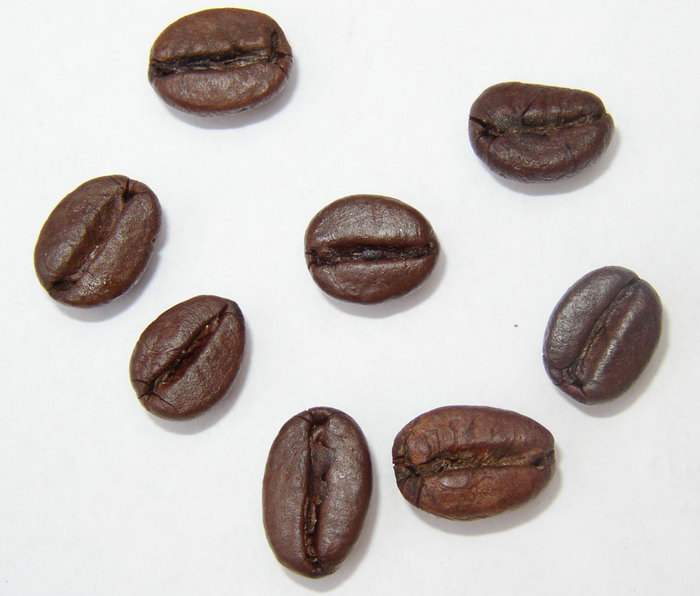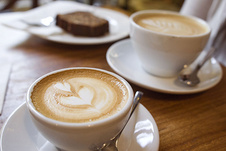With the death of Korean "coffee king", it is time to talk about the success or failure of Korean coffee.
"Korean" Coffee King "passed away"
Kang Hsun, the founder of Coffee, committed suicide in the bathroom of his home in Ricao District, Seoul, at 05:46 local time on the 24th. No suicide note was left at the scene. Company staff contact Jiang Xun has not responded, went to his home to find suicide, and immediately called 119 to declare. The police said: "the company is in a financial crisis. Jiang Xun sent a text message to a friend on the 23rd that he was very tired."
In the Korean coffee market, the extreme choice represented by Jiang Xun, a local brand who has been growing rapidly, has also caused a huge impact in the industry. The analysis thinks that the blind career expansion has trapped his hands and feet. Representative Jiang Xun first set foot in the cause of joining after the foreign exchange crisis in 1998.
Co-venture Hollis Coffee (Hollys Coffee), South Korea's local coffee brands to gain a foothold, and then created the "Coffee with you", the first in the industry to break the record of 500 franchise stores, smooth wind and rapid growth. So it is called "Coffee King".

"opening a coffee shop has become the first choice for Korean youth to start a business."
[global Network Comprehensive report] although coffee is imported, South Koreans' love of coffee is not lagging behind at all. Not only drink coffee frequently, Korean youth also take the coffee shop as the first choice for starting a business.
According to the statistics of 40 closely related industries released by South Korea's National tax Agency on the 11th, by the end of April this year, the total number of employees in South Korean coffee shops reached 39856, an increase of 19.2% over the same period last year. The average increase of employees in 40 industries is 3.3%, and the increase of employees in coffee shops is nearly 6 times the average.
According to the "Asian economy" analysis, the growth of coffee shop employees is mainly due to the continuous growth of coffee consumption in South Korea and the relatively low investment cost of coffee shops, which has become the first choice for a large number of young people to start businesses.
In May this year, South Korea's Ministry of Agriculture, Forestry and Animal products and Food Circulation Co., Ltd. released a report saying that South Korean adults consumed 377 cups of coffee per capita last year, and that coffee market sales exceeded 6.4 trillion won (about 39.2 billion yuan).
In addition to coffee shops, the number of people engaged in the beauty industry also increased by 18.7% compared with the same period last year. Employees in industries such as communication equipment stores (12.2%), convenience stores (10.8%), gyms (9.4%), real estate agents (8.7%) and interior decoration agencies (8.5%) also showed a significant increase.
In contrast, the number of people working in the catering industry fell from a year earlier to 54990 from 58537 a year ago, a decrease of 6.1 per cent. The number of employees in stationery stores (- 5.9%), bathrooms (- 2.8%), hair salons (- 2.6%) and clothing stores (- 2.4%) also decreased to varying degrees.
"Why did China suffer a complete rout?"
[curiosity Daily] reporter Park Chunlan reported:
In 2012, a "King of the House" won the popularity of Hollis Coffee, and then Hollis Coffee entered China in a high profile; then "you from the Stars" became a hit, and the coffee accompanied you to recruit Kim Soo-Hyun.
Five years later, Hollis is now being collected by the supplier, and Zoo Coffee has been completely taken over by Chinese investors, busy with "de-Hanization". The most radical coffee has gone missing with your headquarters. the headquarters of the Kaitai Building on the East fourth Ring Road in Beijing has been empty. there are links to branches such as the United States, Japan, the Philippines, Mongolia and Cambodia, but can not find any information about Chinese companies.
However, the franchisee is still in business, but that grand plan must be gone. For China's ambitious new round of boutique coffee, the lessons of Korean cafes are noteworthy. This is a typical case of what factors can mess things up when investors are eager to break into the Chinese market.
Korean cafes want to attract new consumers, but they do not create new consumer demand. If you have visited Korean cafes, you will find that it is a completely different space from Starbucks. They are often very large, hundreds of square meters or even thousands of square meters, and most of the furniture is cloth sofas, and there may be floor-to-ceiling windows and lovely plush toys placed everywhere, creating a more casual and warm atmosphere.
So the target consumers of Korean cafes are couples, friends or families who meet and chat, and they want to use a larger and more comfortable space for consumers to stay in the store for as long as possible. Xin Zixiang, the founder of Man Coffee, once said that he believes that these consumers who stay in the store will certainly "call friends" and bring more consumers.
There are also Hollis, Man Coffee, Zoo Coffee, MangoSix, Tuchan Coffee and so on. Almost all of them entered China around 2012 and worked with Chinese investors to try to encroach on the Chinese coffee market in a frenzied expansion. These most representative Korean coffee shops have opened more than eight hundred stores in China in the 2014 or 15 years of the fastest expansion.
In China's attractive market, coffee consumption is indeed growing. Coffee consumption in China is growing at a rate of 15% a year, compared with a global average of 2%, according to the London International Coffee Organization. Starbucks, the most successful company in the market, has also accelerated its expansion at the rate of opening a new store every day over the past year or two and has sunk to more and more second-and third-tier cities.
There is also an increase in female consumers in first-tier cities. In the consumption of ground coffee, business consumption is the mainstream, and Starbucks, which accounts for about 40% of the market share, is mainly aimed at business groups. A huge advantage of Korean cafes was that Korean TV dramas were in vogue at that time.
This is exactly the opposite of the strategy adopted by Starbucks, which focuses on the business customer base. Starbucks has a small store and few seats, and they encourage customers to take out rather than sit in the store. Korean cafes hope that people will stay longer and consume more products. So in addition to coffee, tea, cakes, sandwiches and other common categories in coffee shops, Korean coffee shops also have sweeter drinks such as fruit shakes, ice cream, muffins and waffles, as well as bread pastries baked on the spot, with an average of 76 products. the average number of commercial coffee shop brands is only 41.
They are more likely to attract female consumers. In fact, the beautiful food and sweet style design made the Korean cafe once a mecca for girls to take selfies. But that was when South Korean TV dramas were popular, and even now, some of your coffee stores still have portraits of Kim Soo-Hyun, who is clearly out of date in the eyes of Chinese consumers. As more Korean cafes carry Korean fashion and trend symbols, without the stimulation of continuous popular Korean dramas, there is no basis for a sense of existence.
Those young women who were initially attracted to the past are more of a kind of fresh consumption, and they are not typical coffee consumers in the first place. And China's main coffee consumers, that is, white-collar workers, are basically trained by Starbucks. It is also difficult for these people to be attracted to Korean cafes.
Their success in South Korea's home market has more to do with culture. In the 1930s, Korean "teahouse culture" prevailed, and such a teahouse could be found in almost every alley. Although it is called a teahouse, it mainly sells coffee and has become a leisure space for people to get together in the 1960s. In the 1980s, this old-fashioned teahouse injected some modern elements and appeared in universities, urban areas and residential areas. At this time, the teahouse already had a new name-"Coffee Shop", and it was no longer just selling coffee. The products became more and more abundant, such as black tea, shaved ice, plum tea and so on.
It is against this background that Hollis opened its first store in South Korea in 1998 and became the earliest chain brand. Although Starbucks entered South Korea as early as 1999, the coffee consumption market in South Korea was more mature at that time, and they also had a relatively stable customer base.
Although China's coffee consumption market has been growing rapidly, instant coffee still dominates, with bottles accounting for nearly 28%, while Starbucks, Costa, Pacific Coffee and Korean cafes, including the emerging boutique coffee, are competing for only 2% of the freshly ground coffee market, according to Euromonitor. In the freshly ground coffee market, the core consumer group is still white-collar workers.
Not only can not compete for the original coffee consumers, but also failed to retain new consumers, generally speaking, Korean cafes failed to create a new consumer demand, the final result may be "why go to a coffee shop to eat dessert" embarrassment.
"Coffee with you, there are only a few left in Shanghai."
The official website of Coffee with you shows that it is a coffee chain with multiple franchisees in South Korea, except for more than 30 stores that are directly operated in South Korea. In fact, coffee accompanies you to continue this tradition in mainland China, in addition to taking advantage of the popularity of "you from the Star" to hire Kim Soo-Hyun as a spokesman, but also greatly liberalize to open and expand, with more than 600 stores in China at its peak.
Coffee accompany you once proposed that "the number of chain stores in China will reach 5000 by 2015". It is obvious that this plan has long been put on hold. Take the Shanghai market as an example, at present, there are only more than a dozen stores left in Shanghai. Win Merchants Network saw from Dianping that there are only 11 stores in Shanghai, such as Hongquan Road, where CaffeBene Coffee accompanies you (Binjiang Bailian Store) and Caffebene (Jiajie Square Store) show that they are closed, while Caffebene (Caohejing Development Zone Store) is temporarily closed.
"the three major injuries lead to an irrevocable fate."
(1) the Great Leap forward expansion overestimated market demand. At its peak, Coffee accompanied you had more than 600 stores in China, setting a record of 200 stores a year. But with 98 per cent of instant coffee and bottled ready-to-drink coffee, Starbucks, Costa and Korean cafes compete for only 2 per cent of the freshly ground coffee market.
(2) there is no problem with the franchise system, but the non-standardization of products and services is a problem. Korean coffee brands are mainly to join or co-operate, of which coffee accompanies you to the proportion of 10% of the direct business proportion of Zo zoo coffee is only 4%. The franchise fee for a 200ping coffee company in Beijing is about 3 million, but it does not have a standardized system. The promotion and group buying of many stores are carried out separately, and even the key links such as the purchase of coffee beans and food processing are carried out by the stores themselves.
(3) can not get the best position, and is dragged down by the big store model. After 2007, China's commercial real estate began to accelerate, and shopping malls developed with it. Starbucks and Costa, which follow commercial real estate, have more room for development. As a latecomer, when the American coffee priority card, Korean coffee is very difficult to grab particularly good resources, there is no suitable location can not bring sufficient passenger flow, large store mode rent, labor, equipment costs are too high, leading to a vicious circle.
Important Notice :
前街咖啡 FrontStreet Coffee has moved to new addredd:
FrontStreet Coffee Address: 315,Donghua East Road,GuangZhou
Tel:020 38364473
- Prev

All 379 Starbucks tea stores are closed. Is it more difficult to sell tea than coffee?
Following Cafe (official Wechat account vdailycom) found that it took Starbucks about four years or more to realize that Beautiful Cafe opened its own small shop selling tea and coffee. Just this morning, Starbucks announced that it would close all its 379 Teavana tea stores, which means that the company plans to enter the tea industry with
- Next

Drinking instant coffee is more carcinogenic than smoking
Following Kaiping (official Wechat account vdailycom) found that opening a small shop in a beautiful cafe to drink instant coffee is far more harmful than smoking, and it is better to quit instant coffee than to quit smoking. The reporter then asked a number of nutrition and food experts for confirmation. Professor Zhang Ying, School of Food, Zhejiang University, said: we undertake the national project of "effectively reducing hazards in hot-processed foods".
Related
- What ratio of water temperature and ground does the smart cup method use to press coffee? The difference between brewed coffee and filtered coffee?
- What is the standard process for the purpose of coffee cup testing? What is the difference between hand-brewed coffee and cup testing?
- How to use hand-brewed coffee paragon small golden balls? How does cold coffee lock in the aroma of coffee?
- Is American coffee black? What is the difference between American coffee and drip coffee?
- Unexpected! Well-known tea beverage brand Lele Tea will withdraw from the Zhengzhou market!
- Starbucks enters the fashion and beauty industry?! Netizen: Give me an ice American eye cream
- Why can American refills for free? The difference between Americano and American drip pot coffee
- Being chased out of the rain in front of Starbucks?! Store: Sheltering from rain under umbrellas poses a safety hazard
- The white moonlight has changed?! Lucky launches "Big Winter Pear American"
- Hand-brewed coffee three-stage method, high-sweet and universal brewing method to share! What does the high sweet water level of hand-brewed coffee mean?

